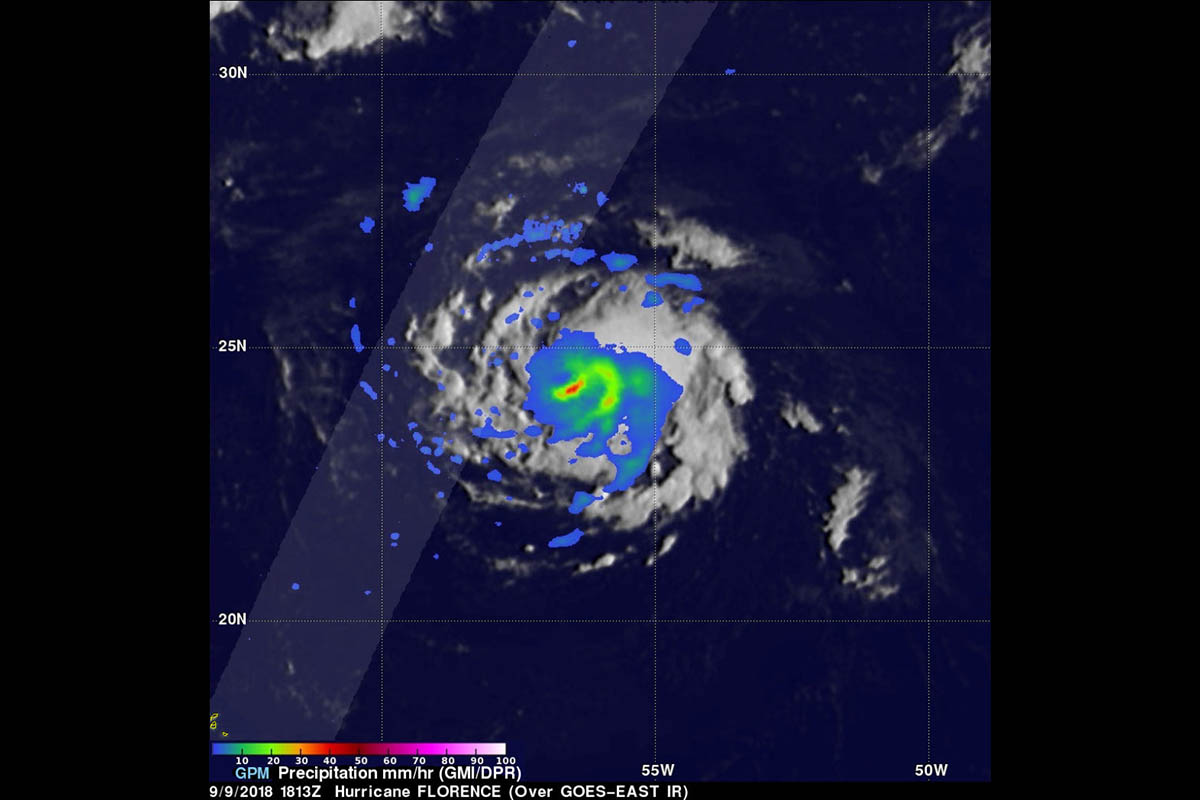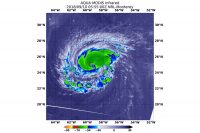The GPM core observatory satellite had a fairly good look at Florence on Sunday, September 9th, 2018 at 1:13p. CDT (1813 UTC). GPM estimated that precipitation was falling at a rate of greater than 44 mm (1.7 inches) per hour in a band of thunderstorms south of Florence’s center. (NASA/JAXA, Hal Pierce)
Home The GPM core observatory satellite had a fairly good look at Florence on Sunday, September 9th, 2018 at 1:13p. CDT (1813 UTC). GPM estimated that precipitation was falling at a rate of greater than 44 mm (1.7 inches) per hour in a band of thunderstorms south of Florence’s center. (NASA/JAXA, Hal Pierce) The GPM core observatory satellite had a fairly good look at Florence on Sunday, September 9th, 2018 at 1:13p. CDT (1813 UTC). GPM estimated that precipitation was falling at a rate of greater than 44 mm (1.7 inches) per hour in a band of thunderstorms south of Florence’s center. (NASA/JAXA, Hal Pierce)
The GPM core observatory satellite had a fairly good look at Florence on Sunday, September 9th, 2018 at 1:13p. CDT (1813 UTC). GPM estimated that precipitation was falling at a rate of greater than 44 mm (1.7 inches) per hour in a band of thunderstorms south of Florence’s center. (NASA/JAXA, Hal Pierce)



